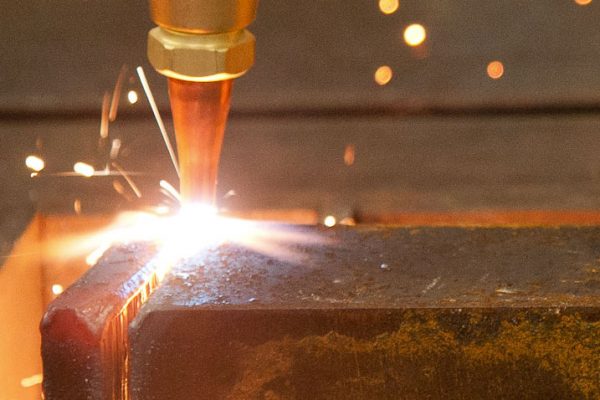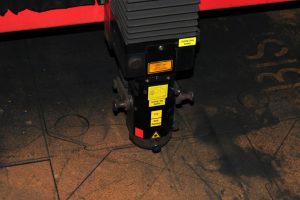Oxyfuse Gas cutting process

Oxyfuse Gas cutting is a cutting feature used to remove molten materials when it gets high temperature from exothermic reaction between oxygen and cutting work. Oxyfuse Gas cutting technology is a steel management process that is heated by the chemical reaction between oxygen and cut off steel with high temperature. In the case of steel cutting with good resistant to oxidation, the chemical flux or metal powder is added into the oxygen stream. The OFC cutting head is comfort to use and can be used for metal cutting with thickness up to 2 m which the advantage is that it can cut quickly and the edges of the cut metal is good quality and affordable.
Operational Principles
- OFC use the bottleneck-like shape cutting head. The cutting head acts to heat the work piece using flame from a mixture of gas, fuel and oxygen to melted the cutting material. Then molten material is blow out.
- Kerf in OC process, the width of cut off steel part is called Kerf, which is used to identify the cutting quality including size and the sharpness of the cutting edge. The OFC process, the width of the Kerf depends on size of oxygen. The used cutting head tip type, cutting speed, oxygen flow rate and the used fuel gas type.
- For thicker work pieces, it requires more oxygen flow as well and it needs to use a larger cutting head tip to be able to support the increased flow rate. As a result, the width of Kerf increases as well. The Kerf width is the required value in various ways. Typically, for the thickness of up to 50 m, the Kurf should be increased (+0.4 mm) as well.
- Drag in head parameter adjustment at the cutting head until the oxygen begin pass through the top to the bottom of the Kerf where this position is called Zero Drag. At this position starts to move the cutting head to cut the metal. If there are increase the cutting speed or reduce the flow rate of oxygen, it will reduce the amount of oxygen in that area. As a result, the bottom area is cut off slower than the top of steel plate due to the reaction in that area is low. Therefore, it will cause the oxygen that penetrate to the bottom is indent with the top or follow by the direction of cutting which is referred the indent distance that the Drag as a percentage of the thickness of cutting work. For example, Drag 10% refers the complete line of cutting work at the bottom has the distance from the top by 10% of the thickness of work piece.
If the cutting speed increase, it will cut more without increasing the oxygen value that the Drag value will increase and reduce the quality of cutting. In the case of Reverse Drag, it will occur only when the excess oxygen is entered or the cutting speed is too low, it will make the quality of cutting is poor.

Oxygen
Oxygen purity value should be greater than 99.5%. The reduction of oxygen purity would reduce the efficiency of cutting. For example, the reduction of oxygen purity by 15% will result in oxygen consumption in cutting head 25%, poor cutting quality and flakes from cutting will more adhesive. If the oxygen purity is below 95%, it will cause the melting until the cutting area is unusable.
Preheat
In the work that needs high quality of cutting, it does not require very high temperature for preheating. The most cutting machines will have two gas control systems: a high-intensity heating system at the beginning of cutting and there are intensity reduction during cutting to save more fuel and oxygen. It also provides the good quality of cutting surface.
The fuel for Preheating before cutting will officiate as follows.
- Increases Metal Temp up to Ignition Point
- Increases the heat to the work to provide better reaction.
- Prevents oxygen from reaction with atmosphere.
- Remove adulterated things such as rust, color, and flakes.
Factors for the fuel selection
- Heating duration
- Impacts on cutting speed, shape and erosion
- Impacts on work piece
- Fuel unit cost
- Safety in the use and storage
Oxyfuse Gas cutting provides the surface of the cut metal more smooth. However, the quality of cutting depends on the speed and amount of oxygen. If you want to get high quality of work, you need to use speed and oxygen to be consistent.


